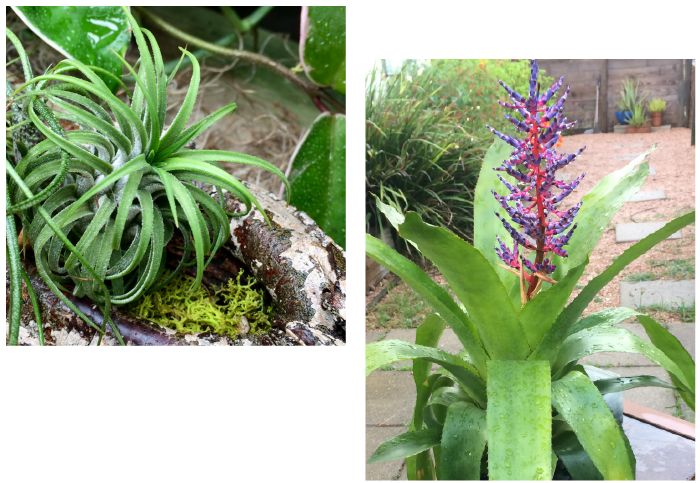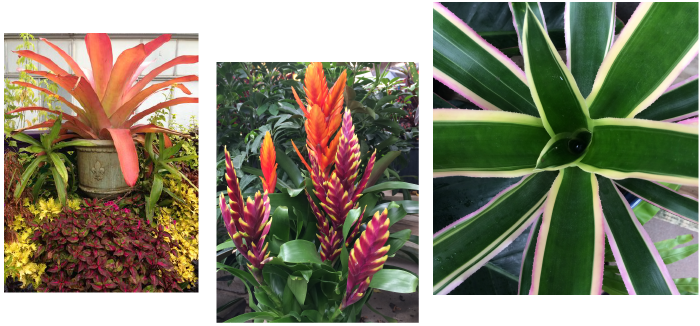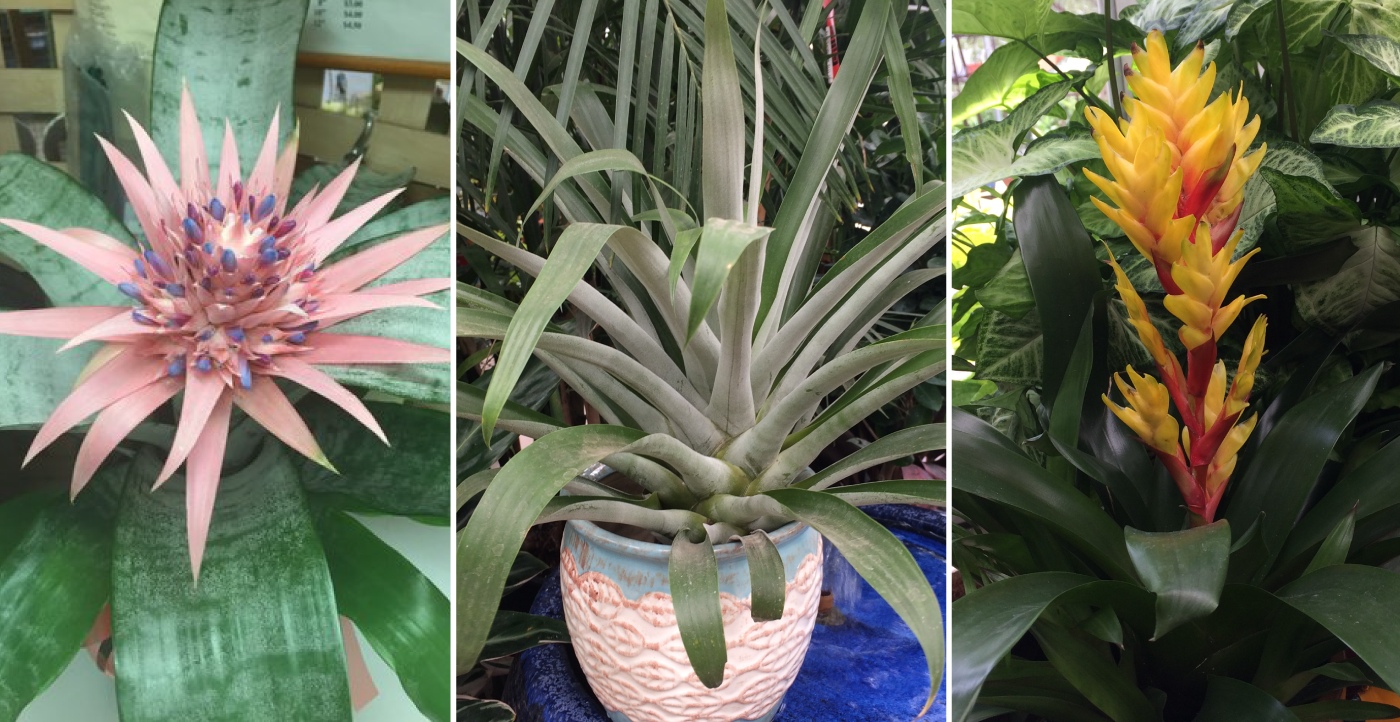I was blown away by the bromeliads that came in our last order from Florida. I wasn’t shopping for anything new but couldn’t resist their breathtaking beauty. Sometimes you’re only window shopping, and then, presto! – you walk out with something new. I thought, “wow, this is pretty, but how do I take care of it?”
Here’s what I learned:
Bromeliads originated in southern North America, most of South America, and isolated portions of Africa. There are a couple you may already know. The smallest is found hanging from oak trees. Spanish moss, a tillandsia, is part of the bromeliad family. Another bromeliad is a well-known tropical fruit, often used to garnish tropical drinks. Pineapple!

The more than 3,400 species of bromeliads have unique and fascinating foliage and flowers.
Some are toothed, some bloom tall spikes; others change color or develop tiny flowers inside their water wells.
Most bromeliads gather water and nutrition from their foliage or water well. They need little to no soil for their root system. They are often epiphytic, clinging to trees or other structures. They are not parasitic.

Caring for them is super easy.
Bromeliads enjoy filtered bright light – indoors or a patio is perfect. Keep water in the cup and only water the soil when dry. Dump water weekly to avoid stagnation. Feed them with a half-strength fertilizer once monthly. (We suggest Hastagro.)
Remember, they don’t need a big pot to grow. You can mount them on driftwood or stumps, even hang them from mossed wire.
Now, here’s the cool part.
As the flowers fade, the parent plant will produce offshoots around the base. These are baby bromeliads that can be removed and planted – making one plant into many plants! As new ones grow, the parent plant has done it’s part and begins to die. You can enjoy them for years to come and share them with friends.
To start your new plants, leave the sprouts growing until they are just big enough to handle, 3″-4″ tall should be good. Remove them by cutting them off just under the soil and plant them in sphagnum moss or loose planting mix. Orchid bark or seed and cutting mix would be great. They will require the same care as the parent plant. Moisten the soil and fill the center cup with water.

The more widely cultivated species are Aechmea, Guzmania, Cryptanthus, Vriesea, and Tillandsia. They are commercially grown in Florida, making them available for us year-round.
Tropical and exotic and easy?! You bet! See ya soon!
 -Debbie
-Debbie



Donna Jackson says
Very good article but you did not discuss blooming. I have had a Bromeliad for a few years and it has never bloomed. What can I do about that?
Thank you
Sally Gill says
Wonderful! I have a bromeliad a friend gave me that made it through the snow as well. They really are pretty tough plants! Enjoy!!
SUSAN says
I have bromeliads growing in my oak tree. I placed them there about 7 years ago. One plant has turned into about 50 plants over the years. They are very hardy. And they even made it through the snow last year with a minimal loss. I just water and fertilizer occasionally. Their foliage is beautiful and visitors comment about them often.
shirley says
thanks, Debbie, just the info I needed. I have plants that were bought at bot. gardens moonlight in the garden event and now they have babies. needed to know exactly where to cut them. have them sitting on my patio so I see them first thing every morning.
Sally says
Very cool! I personally find plants I have received from friends to be even more special and often times makes for a good story!
Margaret Robinson says
I have a bromeliad that was given to me in 1989 in New Orleans. I’ve shared often. Those babies add joy to many other folks. Thank you for this article!